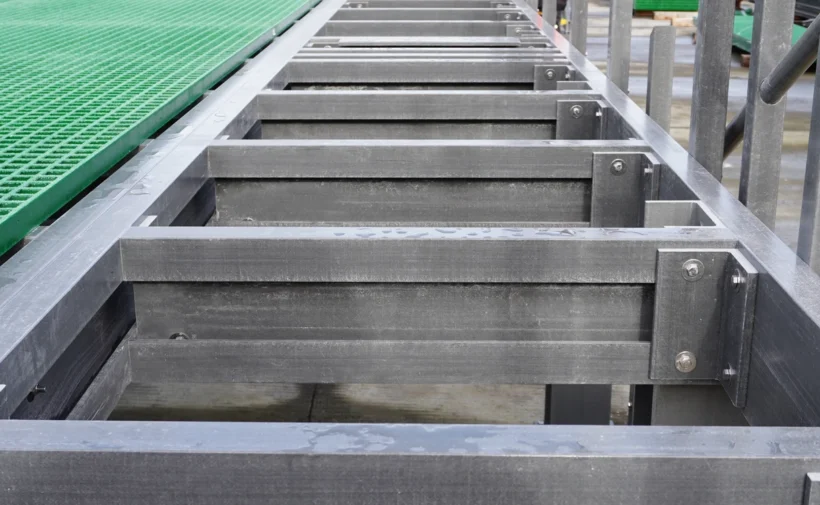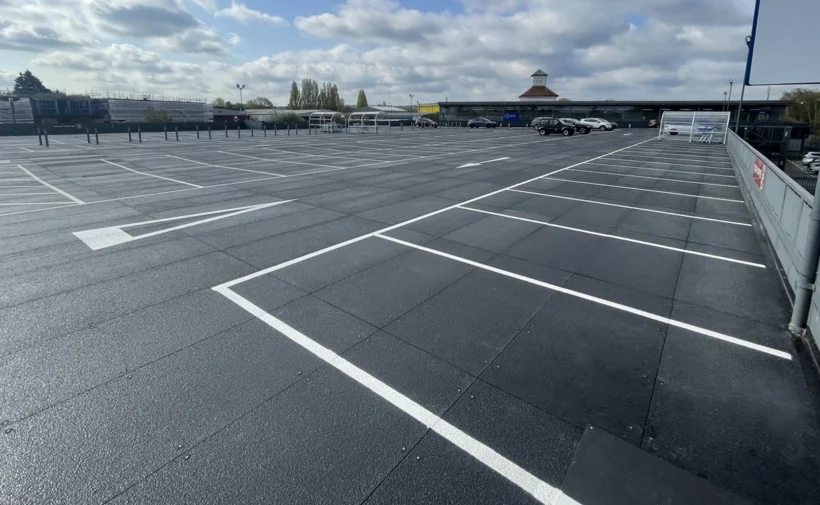The High-Strength, Lightweight Solution for Modern Engineering
Unlike many traditional materials, Glass Reinforced Polymer (GRP) performs exceptionally well under tension, thanks to the high tensile strength provided by its glass fibres and the flexibility of the polymer resin matrix. These two elements work in tandem, resulting in a composite that combines strength and durability with reduced weight.
GRP composites offer a favourable stiffness-to-weight ratio, making them ideal for applications requiring both strength and lightweight properties to achieve the required performance. This is particularly advantageous in industries where reducing mass without sacrificing structural integrity is critical, such as in construction and civil engineering.
The Importance of Elastic Modulus in GRP
However, not all composites are created equal. The performance of GRP is influenced by a wide range of factors, from fibre orientation and resin type to manufacturing processes and environmental conditions. This is where an understanding of the elastic modulus becomes essential.
For engineers, the elastic modulus is a key property used to calculate stresses in materials, helping predict how much a structure will bend, stretch, or deform under load. Materials with a high elastic modulus are stiff and resist this bending, making them suitable for structural applications where rigidity is paramount, such as bridges, walkways, and access platforms. Conversely, a mismatch between the anticipated stresses and a material’s modulus could result in product failure or compromised safety.
Industry Standard: BS EN 13706
To ensure the safe and effective use of GRP, industry standards such as BS EN 13706 provide specifications for reinforced plastic composites, specifically pultruded profiles. This standard outlines the minimum required values for key mechanical properties like the flexural and tensile modulus. For example, an E23 grade corresponds to a flexural or tensile modulus of 23 GPa, ensuring a baseline level of stiffness for pultruded GRP products.
However, in reality, very few GRP products available in the marketplace have been rigorously tested to confirm their actual modulus. Many manufacturers rely on generic data tables or outdated information from unverified sources, which can lead to significant discrepancies between the claimed and real-world performance of the material. This lack of thorough testing and validation poses a risk to engineers and designers, who may unknowingly select materials that fail to meet the necessary standards, potentially compromising the safety and reliability of their projects.
Outperforming the Standard: d² Dura Profiles
At Dura Composites, we’ve pushed the boundaries by developing d² structural profiles that outperform the competition. Our products are, on average, 50% stronger than standard GRP profiles in terms of flexural and tensile modulus. This means designers and engineers can use smaller or fewer components without compromising performance, leading to significant improvements in efficiency and cost-effectiveness.
Through rigorous testing – ranging from standard coupon testing to the examination of fully pultruded profiles, as specified in BS EN 13706 – we have consistently demonstrated that our d² profiles exceed the E23 grade by an impressive margin. This enables engineers to either opt for profiles that are twice as strong or components that are one-third smaller compared to competitor products. The d² profile flexural modulus averages +45 GPa for full section flexural testing, with some profiles achieving over 65 GPa for a given use case span!




